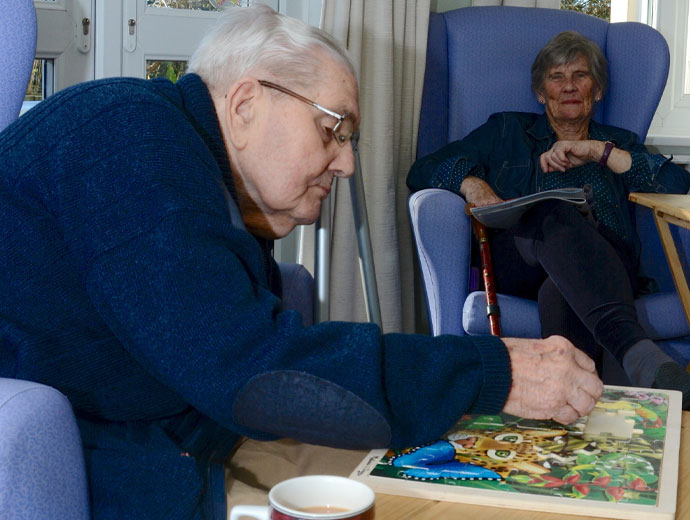
Emotional abuse, which is a form of physical abuse, causes emotional pain and distress to the elderly victim. The symptoms include humiliating and intimidating behavior, hiding tools or assistive devices, anger or social isolation. A majority of the abusers are family members, who are often close to the victim. These four behavior patterns are common among victims. Although there is no single definition of abuse, they are all very common. It is possible to identify signs of emotional abuse and find qualified caregivers that can help protect elder abuse victims.
Financial abuse
Elder abuse is a serious problem, whether an individual is physically or financially exploiting the elderly. Trust is often the foundation of relationships that prevent financial abuse of the elderly. It can be very difficult to detect financial abuse of the elderly. This article will highlight some of the ways in which financial abuse of the elderly can be detected and prevented. Financial abuse of the elderly can be prevented by being educated.

Violent physical abuse
Often, abuse of the elderly can be unintentional. This type of abuse is often committed by unmarried, unemployed individuals who may also have substance abuse issues. The National Center on Physical Abuse of the Elderly suggests that victims and caregivers look for signs of abuse in the form of patterns and clusters. Victims of abuse and their caregivers must consider secondary victimization when investigating the cause.
Emotional abuse
Emotional abuse is not the same thing as physical abuse. An act of physical abuse or neglect that causes another person to be hurt physically or emotionally is known as physical abuse. Examples of physical abuse are physical punishment, deprivation or hygiene, verbal abuse and threats. Emotional abuse of the elderly can also be in the form of threats or insults, and can include limiting access to essentials such as food, shelter, and medical care.
Exploitation
There may be many tactics used to exploit elderly people financially, such as coercion and deceit. Elders should not be scared about reporting financial abuse. Many financial abusers might have a history stealing money from elderly victim. Although these crimes are unlikely to result in criminal prosecutions, victims should look into civil lawsuits against perpetrators. This could allow victims to recover lost funds and stolen property.
Social isolation
There are many methods to reduce loneliness and social isolate. Participating in social activities will help you avoid loneliness and isolation. This will allow you to live a happier and healthier life. Regular exercise and social interaction are important. Senior citizens who are isolated from the outside may not be getting enough exercise. The risk of developing a serious condition can also be increased by loneliness. Chronic loneliness can make a person feel anxious and fearful.

Sexual abuse
There are two types of signs that elder sexual abuse is occurring: behavioral and physical. Some physical signs of elder sexual abuse include: pelvic injuries; bruising around the breasts and genitals; difficulty walking; and bloody underwear. Some elders who have experienced sexual abuse may display signs of agitation or withdrawal from social activity, or even attempt suicide. The behavior of the abuser towards the victim may be one example of behavioral signs. Behavioral signs include the elderly subject's fear of being sent to a nursing home.
FAQ
How can we improve our health care system?
We can improve our healthcare system by ensuring that everyone has access to high-quality health care, regardless where they live or how much insurance they have.
We should ensure that all children receive necessary vaccinations, so they don't develop preventable diseases like measles, mumps, and rubella (MMR).
We must work to reduce the cost of healthcare while making sure that it is accessible to all.
What are medical systems and what do they mean?
Medical systems are designed so that people can live longer, more fulfilling lives. They ensure patients receive the best medical care, when and where they need it.
They make sure that the right treatment is provided at the right time. And they provide the information needed for doctors to give the best possible advice on what treatment would suit each patient.
What is a healthy system?
Health systems include all aspects related to care, from prevention and rehabilitation to everything in-between. It includes hospitals. clinics. pharmacies. community services. public health, primary and long-term health care. home care. mental health and addictions. palliative, end-of life care. emergency medicine. research, education. financing. and regulation.
Health systems are adaptive complex systems. They exhibit emergent properties that can't always be predicted just by looking at the individual components.
Health systems are complex and difficult to understand. This is where creativity comes in.
Creativity is a way to find solutions to problems that we don't know the solution to. We use our imaginations to create new ideas and develop ways to improve things.
Because they are constantly evolving, health systems require people who think creatively.
People who think creatively can help change the way health systems operate for the better.
What are the levels of health care facilities in each category?
The first level is general practice clinics which provide basic medical services for patients who do not require hospital admission. They may also refer patients to other providers if required. This includes nurse practitioners, general practitioners and midwives.
The second level includes primary care centers that offer outpatient comprehensive care including emergency treatment. These include hospitals.
The third level includes secondary care centers that offer specialist services like eye surgery, orthopedic surgery and neurosurgery.
Statistics
- For instance, Chinese hospital charges tend toward 50% for drugs, another major percentage for equipment, and a small percentage for healthcare professional fees. (en.wikipedia.org)
- Foreign investment in hospitals—up to 70% ownership- has been encouraged as an incentive for privatization. (en.wikipedia.org)
- Healthcare Occupations PRINTER-FRIENDLY Employment in healthcare occupations is projected to grow 16 percent from 2020 to 2030, much faster than the average for all occupations, adding about 2.6 million new jobs. (bls.gov)
- The healthcare sector is one of the largest and most complex in the U.S. economy, accounting for 18% of gross domestic product (GDP) in 2020.1 (investopedia.com)
- Price Increases, Aging Push Sector To 20 Percent Of Economy". (en.wikipedia.org)
External Links
How To
What are the 4 Health Systems?
Healthcare is a complex network that includes hospitals, clinics and pharmaceutical companies as well as insurance providers, government agencies, public officials and other organizations.
The ultimate goal of the project was to create an infographic that would help people to better understand the US health system.
These are some key points.
-
The annual healthcare expenditure is $2 trillion. This represents 17% the GDP. This is almost twice as large as the entire defense budget.
-
Medical inflation was 6.6% in 2015, higher than any other category of consumer.
-
Americans spend 9% of their income annually on health.
-
In 2014, over 300 million Americans were uninsured.
-
Although the Affordable Care Act (ACA), has been passed into law, it is not yet fully implemented. There are still large gaps in coverage.
-
A majority of Americans believe that there should be continued improvement to the ACA.
-
The US spends more than any other nation on healthcare.
-
If every American had access to affordable healthcare, the total cost would decrease by $2.8 trillion annually.
-
Medicare, Medicaid and private insurers pay 56% of healthcare expenses.
-
The top three reasons people aren't getting insured include not being financially able ($25 billion), having too much time to look for insurance ($16.4 trillion), and not knowing what it is ($14.7 billion).
-
There are two types, HMO (health maintenance organization), and PPO (preferred providers organization).
-
Private insurance covers most services, including doctors, dentists, prescriptions, physical therapy, etc.
-
The public programs cover outpatient surgery as well as hospitalizations, nursing homes, long term care, hospice, and preventive health care.
-
Medicare is a federal program providing senior citizens health coverage. It covers hospital stays, skilled nursing facilities stays, and home care visits.
-
Medicaid is a joint state-federal program that provides financial assistance to low-income individuals and families who make too much to qualify for other benefits.